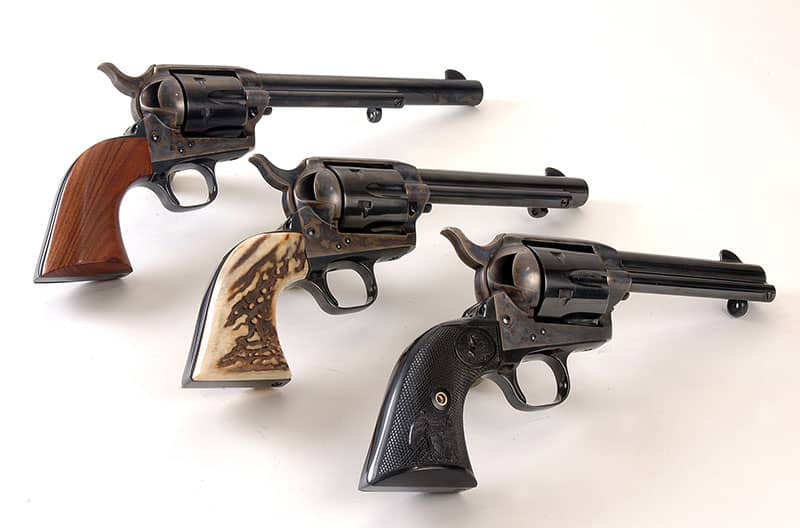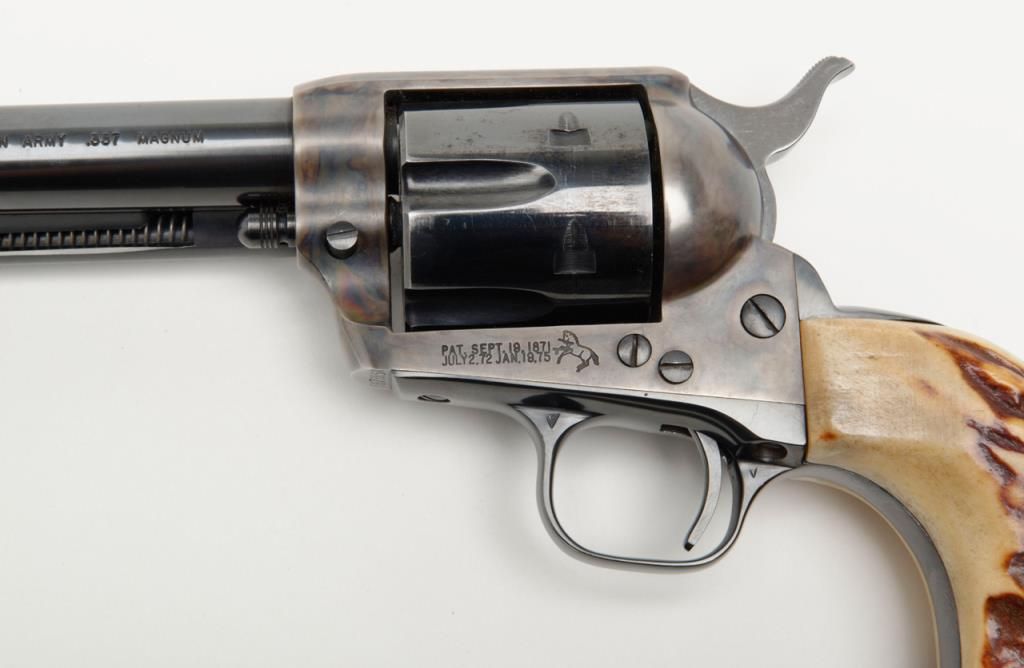- Colt Saa Serial Numbers 3rd Generation List
- Colt Saa Serial Numbers 3rd Generation Price
- Colt Saa Serial Numbers 3rd Generation For Sale
She told my friend she wanted to sell the gun to someone that would enjoy it as much as her husband did. Even though he never shot it. After a few phone conversations we settled on a price. Now I have to decide on a good holster to purchase.
https://www.24hourcampfire.com/ubbthreads/ubbthreads.php/galleries/15199329#Post15199329
Colt Saa Serial Numbers 3rd Generation List
Remarks Year Made Serial # Source The First Colt Single-Action Army (SAA) Revolver This is the first SAA made by Colt. For many years it was thought to be lost, but was located during the early 1900s in a barn in Nashua, NH. 1873 1 American Cowboy Chronicles 20th Kansas Volunteer Infantry The initial use of this 'pinched frame' civilian model. In 1978, The New Frontier went back into production with the Third Generation Colt Single Action Army. Serial Numbers began at 01001NF, using five digits instead of four. In the last, and according to Colt, final run of New Frontiers, calibers were.45 Colt,.357 Magnum,.44 Special, and.44-40. SOLD FOR: $2,726.00 LSB#: 190107MB01 Make: Colt Model: 3rd Generation Single Action Army Serial Number: 84207SA Year of Manufacture: 1977 Caliber:.45 Colt Action Type: Single Action Revolver with Side Loading Gate Cylinder. Single Action Army Serial Number: SA 98501 Year of Manufacture: 1992-1994 Caliber:.45 Colt Action Type: Single Action Revolver With Side Loading Gate Markings: The left side of the barrel is marked “COLT SINGLE ACTION ARMY.45”. The left side of the frame is marked “PAT. 19, 1871 / JULY 2, 72 JAN.

FIREARMS INFORMATION
History :The First Generation Colt Single Action Army revolvers were produced between their introduction in 1873 and WWII. Production resumed in 1956, and these guns are known as 'Second' generation Single Action Army revolvers, which are quickly identified by a 'SA' suffix at the end of their s/n, and continued through 1975. In 1976 a 'Third'generation of Colt Single Action Armys was introduced. On these, the 'SA' marking is moved to the front of the serial number.
These guns carried a varied number of names, from 1873 for the year it was introduced. The Peacemaker was another name used by the old west community. Single Action Army was what the military used when the guns were issued to the cavalry. The factory even today uses model designations of the alphabet and this model was the 'P'.
Calibers & Configurations :The .45 Colt chambering was by far the most popular, accounting for nearly half of the pre-WWII SAA's. The 'Winchester Centerfire' calibers – .44 WCF (44-40), .38 WCF (38-40), and .32 WCF (32-20) placed 2nd, 3rd and 4th in popularity; doubtless in part due to the fact that paired with an 1873 or 1892 Winchester they allowed the usage of the same cartridge in both rifle and revolver, simplifying supply logistics. The obsolete .41 Colt was the only other caliber produced in significant quantity, although a number of other chamberings were available on special order. Other calibers as 38 Special and 44 Special were among those included. Standard barrel lengths were 7-1/2', 5-1/2', and 4-3/4', with others available on special order.

Special guns made without ejector rods or housings were called 'Sheriff's Models' or 'Storekeepers Models', and often had shorter than standard barrels. The SAA was used by the US military from it's introduction through the Spanish American War and Philippine insurrection. The original 7-1/2' barrel martial version is called the 'Cavalry Model' by collectors. Many military SAA's were refurbished by Springfield Armory or Colt for reissue with a shorter 5-1/2' barrel, and these are called 'Artillery Models' today. The Bisley model was introduced in the 1890's, and featured a redesigned grip and hammer and was designed for target shooting.
Later in the 3rd generation series the New Frontier was introduced with a more squarer top strap of the frame for accommodation of adjustable rear sights plus a ramped base and front sight.
| Colt model 1873, also known as the Single Action Army, or the 'P' model at the factory. This gun happens to be a 1st Generation |
Barrels :The threads on the 1st and 2nd generation guns used a 20 thread per inch threads. On the later 3rd generation the barrel threads were changed to a finer pitch.
Cylinders :Also the cylinder ratchets were made differently, thus requiring other component parts that mate to and function with the cylinder to be also altered. The new cylinder eliminated the integral base pin bushing. When we refer to Old Style or New Style, we are actually meaning the Old Style as being either the 1st or 2nd generation, while the New Style as the 3rd generation.
Bolts / Cylinder Stops : The technical factory name for these parts is a 'Bolt' or probably a locking bolt. Many non gunsmithing persons call them a cylinder stop. This part was used unchanged until 1976 when the 3rd generation version was brought out. The original part number was #50976. After the change the part number was not changed, but the configuration of the part did. It was simply designated the 'Old Style' or the 'New Style'.
Listed below are the various styles encountered. Those of you who are trying to find a replacement part for the aftermarket 'Clones' may well have to take the firearm in question apart and compare the broken part with these CAD drawings of the Colt SAA. The Old Style and New Style are exact replacements for the Colt firearm.
The Modified Style was a composite of both including the thicker rear bottom of the NS plus the extended tail of the OS and was designed to fit about any model out there, whether it be a clone or a worn Colt. These Modified Styles cylinder stops WILL HAVE to be fitted to each gun. As far as we know, Wisner's Inc. are the only ones making this specific modified interchangeable part which should be able to be fitted to the clones. This modified version is made with the bottom section below the pivot hole thicker like the New Style, but with the tail shape and length of the Old Style and then the tail is lengthened by about .020. This configuration will fit most all the clones and of course even some of the worn old original SAAs.
| Old Style #50976 OS | New Style #50976 NS | Modified Style #50976 M |
These bolts are made in a standard thickness of .152. Wisner's Inc. also makes an oversize thickness of .160 to be used on old worn cylinder locking notches.
All of these parts need to be hand fitted to the individual firearm. They are not just a drop in part, even the factory replacement parts were not. The RH tail need not be fitted, other than stoning the back side to allow it to function smoothly. The inner (LH) tail end needs to be fit to the hammer stud so it is timed to slide off the stud's angle as the hammer is cocked, just as the cylinder is rotated with the locking notch in line with the bolt at the full cocking motion of the hammer.
Once the bolt is in line with the cylinder notch, the bolt's tail slips off the hammer stud, the bolt's inner radiused face will drop into place with the hammer's stud now that the hammer is rearward, locked into the fire sear notch of the hammer.
Before all this can take place, the hammer has to have proper sear notches, the stud has to be correct for timing. The trigger also needs to be in good shape to mate with the hammer notch for proper timing. Also the cylinder base pin and bushing need to be fitted so not excess slop is there for endshake looseness.

Hands : The hands were also changed at the 3rd generation to fit the new cylinder ratchet notches as shown below.
Sear & Bolt Spring : The sear and bolt spring is as flat, dual tailed spring held in place by one screw. It places tension on both the trigger and the bolt. The original thickness of this spring is .045. Aftermarket springs of a medium strength are made in .035 while a light weight version is made in .025. The .035 would be the common one used to lighten up the average shooter firearm.
Mainspring :The mainspring is a flat arched leaf spring that has a slight groove on the upper forward end for the hammer roller to ride in. This groove also keeps the mainspring centered in the frame so it does not shift sideways, allowing binding. The original material was .062 thick and machined to a taper (top to bottom) to make it like a buggy whip for the 1st and 2nd generation guns. The 3rd generation saw the same spring, but no taper, making it a heavier pull on the hammer.
Replacement mainsprings are usually made slightly long so they can be fitted to about any version, even the many copies or clones. If they are NOT properly fitted for these longer springs, when the hammer is pulled to the rear to full cock, the front tip section may bind in the inner arc of the hammer which will create a stiff resistance right at let-off, because it is being stopped by the mainspring front. This situation makes for a hard cocking firearm PLUS it can very well break the tip off the mainspring.


< />
Back to the Main Ramblings Page
Colt Saa Serial Numbers 3rd Generation Price
Colt Saa Serial Numbers 3rd Generation For Sale
Originated 05-11-06 Originated 01-04-2021
Contact the author